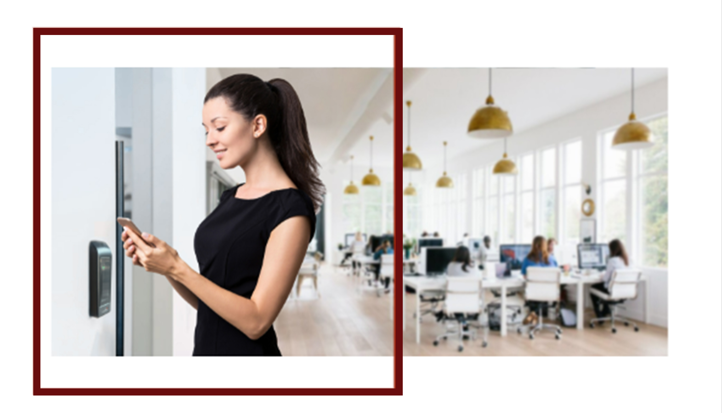Summer Tenant Turnover? Boost Rental Property Security Smartly

We often say, “safety first”—but in the world of real estate, property management, and facility operations, proof of safety matters more than ever. You might already be running a tight ship: your cameras are up, your access control system is fully functional, and your maintenance logs are squeaky clean. But here’s a question you might not have asked lately: Does Anyone Outside Your Team Know That? Recognition isn’t just about ego or awards. It’s about visibility, trust, compliance—and yes, profitability. We live in a world where perception drives decision-making. If people don’t see your building as safe, they won’t treat it that way. Whether you manage a commercial property, a multifamily complex, or a government facility, your building’s security reputation can impact occupancy, tenant satisfaction, insurance rates, and even your property’s market value. Let’s break down why being recognized for your building’s safety matters, what programs are available, and how it can help you stand out in a crowded market. Safety Is a Selling Point—But Only If People Know About It Common question: “We already have great security—do we really need to advertise it?” Short answer: Yes. Because perception drives behavior. In a recent survey by NMHC, over 82% of renters said that security features were a top factor in choosing where to live. But it’s not enough to just have security—you need to showcase it. Here’s the thing: tenants rarely ask to see your technical specs. They want to feel secure, and that starts with visible systems, clear policies, and proud presentation. What you can do: Use signage that highlights your 24/7 surveillance and access control system. Add security protocols to your lease agreements and welcome brochures. Give security tours—just like you would for amenities like the gym or rooftop lounge. Post tenant reminders during holidays or events to show proactive safety planning. Bonus tip? Record short videos of your safety walkthroughs and post them on your website or social channels. It turns your security into a marketing asset, not just a liability line item. Certifications Are More Than Stickers—They Signal Operational Maturity Common question: “Do certifications really make a difference?” Absolutely. Especially when you’re managing risk, securing funding, or trying to win over stakeholders who don’t see security as “glamorous.” Certifications give your safety claims credibility. Whether it’s an industry standard or a local recognition program, it tells others: “We don’t just talk about safety—we prove it.” You might consider: UL 294 / UL 2050: For commercial-grade access control systems and electronic security components. Crime-Free Housing programs: For multifamily or student housing. LEED + WELL certifications: If sustainability and well-being are part of your brand. Local Safe Site Programs: Some municipalities offer these in partnership with law enforcement. These aren’t just badges—they’re trust builders. They also open doors to faster permitting, better insurance premiums, and a smoother tenant onboarding experience. Recognition Improves Stakeholder Relationships (and Budget Conversations) Common question: “How do I get leadership to invest in security upgrades?” We get it—security doesn’t always get top billing in budget meetings. But when you show that your security program has external validation, it reframes the discussion. Instead of saying, “We need a better camera,” you’re now saying: “We’ve been nominated for a regional Safe Property award—and with one more investment in access control, we can win it next year.” It changes the narrative. Here’s how you can build the case: Track KPIs like door event logs, alarm incidents, and access attempts. Compile a one-page quarterly report showing improvements. Add third-party comments from vendors or inspectors to your presentation deck. Tie access control directly to tenant satisfaction surveys or online reviews. By proving your program’s impact and credibility, you’re not just asking for money—you’re presenting a strategy. Download the Cloud Access Control Checklist your 15-step, printable guide to building a secure, scalable, and cloud-ready system. Includes: PoLP setup, MFA guide, permission audit worksheet + a bonus printable template. Click Here It Can Directly Impact Your Bottom Line Common question:“Will this recognition really improve ROI?” It’s easy to forget how many areas safety touches: Tenant retention: Safe buildings = loyal tenants. People rarely renew if they feel unsafe. Faster lease-ups: Security features often tip the scale in multifamily and office leases. Reduced liability: In the event of a security incident, documented protocols can help limit exposure. Higher appraisals: Smart buildings with reliable access control systems command higher value in the eyes of investors and buyers. And here’s a fresh angle: branding. Imagine having a plaque in your lobby that says, “Certified Safe by [Local Authority or Partner Program].” Or an online badge on your property’s website. It’s more than feel-good PR—it’s a positioning tool that separates you from the building down the street. Recognition Builds Confidence and Legal Protection Common question:“We haven’t had any incidents—why should we fix what isn’t broken?” Because in today’s world, being reactive is risky business. When something does go wrong, the first question will be: “What had been done to prevent this?” Recognition shows a proactive, transparent approach to risk management. It proves you followed the best practices available. In a legal or PR crisis, this documentation and third-party verification may be your best defense. Even more importantly, it builds community trust. Tenants are more likely to report suspicious activity or follow safety rules when they know you take it seriously. Final Takeaway: Don’t Just Be Secure—Be Seen as Secure We’re not saying you need to chase trophies. But we are saying this: visibility in your security strategy adds real-world value. A modern access control strategy, when layered with surveillance, training, and third-party recognition, transforms your building from just “another property” into a respected, trusted, and preferred destination. Want to Learn What Recognition Could Look Like for Your Facility? Millennium helps buildings move beyond basic access control. We partner with property managers, IT leads, and operations teams to assess, elevate, and even certify your system’s safety level—whether you’re managing five doors or five campuses. Let us show you how a future-ready access
“Safety First” Isn’t Just a Slogan—Here’s Why Your Building Needs to Prove It
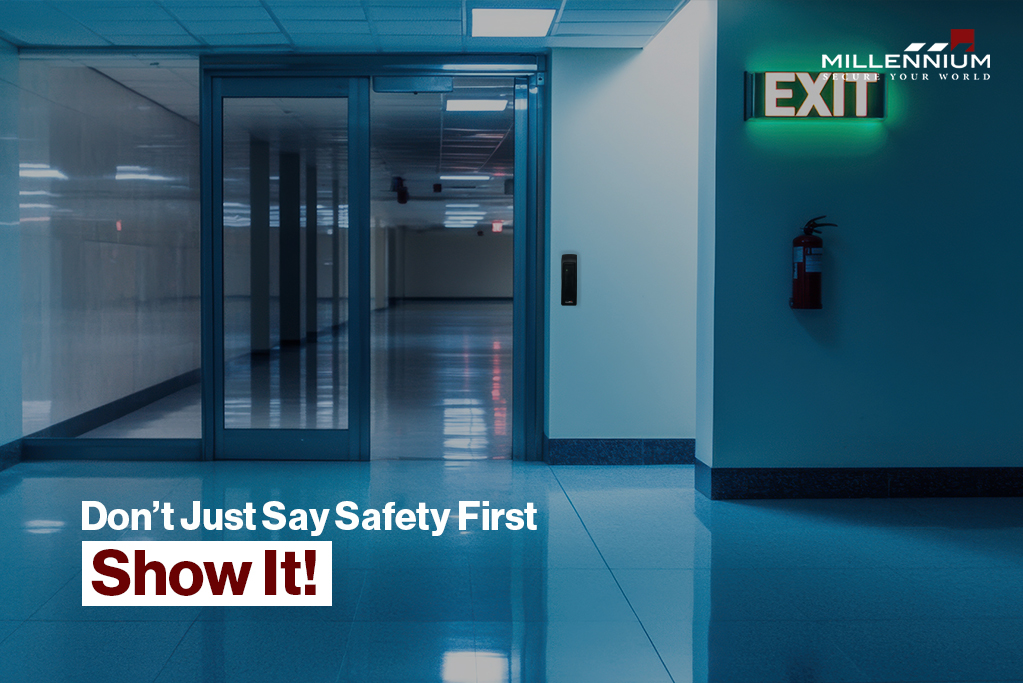
We often say, “safety first”—but in the world of real estate, property management, and facility operations, proof of safety matters more than ever. You might already be running a tight ship: your cameras are up, your access control system is fully functional, and your maintenance logs are squeaky clean. But here’s a question you might not have asked lately: Does Anyone Outside Your Team Know That? Recognition isn’t just about ego or awards. It’s about visibility, trust, compliance—and yes, profitability. We live in a world where perception drives decision-making. If people don’t see your building as safe, they won’t treat it that way. Whether you manage a commercial property, a multifamily complex, or a government facility, your building’s security reputation can impact occupancy, tenant satisfaction, insurance rates, and even your property’s market value. Let’s break down why being recognized for your building’s safety matters, what programs are available, and how it can help you stand out in a crowded market. Safety Is a Selling Point—But Only If People Know About It Common question: “We already have great security—do we really need to advertise it?” Short answer: Yes. Because perception drives behavior. In a recent survey by NMHC, over 82% of renters said that security features were a top factor in choosing where to live. But it’s not enough to just have security—you need to showcase it. Here’s the thing: tenants rarely ask to see your technical specs. They want to feel secure, and that starts with visible systems, clear policies, and proud presentation. What you can do: Use signage that highlights your 24/7 surveillance and access control system. Add security protocols to your lease agreements and welcome brochures. Give security tours—just like you would for amenities like the gym or rooftop lounge. Post tenant reminders during holidays or events to show proactive safety planning. Bonus tip? Record short videos of your safety walkthroughs and post them on your website or social channels. It turns your security into a marketing asset, not just a liability line item. Certifications Are More Than Stickers—They Signal Operational Maturity Common question: “Do certifications really make a difference?” Absolutely. Especially when you’re managing risk, securing funding, or trying to win over stakeholders who don’t see security as “glamorous.” Certifications give your safety claims credibility. Whether it’s an industry standard or a local recognition program, it tells others: “We don’t just talk about safety—we prove it.” You might consider: UL 294 / UL 2050: For commercial-grade access control systems and electronic security components. Crime-Free Housing programs: For multifamily or student housing. LEED + WELL certifications: If sustainability and well-being are part of your brand. Local Safe Site Programs: Some municipalities offer these in partnership with law enforcement. These aren’t just badges—they’re trust builders. They also open doors to faster permitting, better insurance premiums, and a smoother tenant onboarding experience. Recognition Improves Stakeholder Relationships (and Budget Conversations) Common question: “How do I get leadership to invest in security upgrades?” We get it—security doesn’t always get top billing in budget meetings. But when you show that your security program has external validation, it reframes the discussion. Instead of saying, “We need a better camera,” you’re now saying: “We’ve been nominated for a regional Safe Property award—and with one more investment in access control, we can win it next year.” It changes the narrative. Here’s how you can build the case: Track KPIs like door event logs, alarm incidents, and access attempts. Compile a one-page quarterly report showing improvements. Add third-party comments from vendors or inspectors to your presentation deck. Tie access control directly to tenant satisfaction surveys or online reviews. By proving your program’s impact and credibility, you’re not just asking for money—you’re presenting a strategy. Download the Cloud Access Control Checklist your 15-step, printable guide to building a secure, scalable, and cloud-ready system. Includes: PoLP setup, MFA guide, permission audit worksheet + a bonus printable template. Click Here It Can Directly Impact Your Bottom Line Common question:“Will this recognition really improve ROI?” It’s easy to forget how many areas safety touches: Tenant retention: Safe buildings = loyal tenants. People rarely renew if they feel unsafe. Faster lease-ups: Security features often tip the scale in multifamily and office leases. Reduced liability: In the event of a security incident, documented protocols can help limit exposure. Higher appraisals: Smart buildings with reliable access control systems command higher value in the eyes of investors and buyers. And here’s a fresh angle: branding. Imagine having a plaque in your lobby that says, “Certified Safe by [Local Authority or Partner Program].” Or an online badge on your property’s website. It’s more than feel-good PR—it’s a positioning tool that separates you from the building down the street. Recognition Builds Confidence and Legal Protection Common question:“We haven’t had any incidents—why should we fix what isn’t broken?” Because in today’s world, being reactive is risky business. When something does go wrong, the first question will be: “What had been done to prevent this?” Recognition shows a proactive, transparent approach to risk management. It proves you followed the best practices available. In a legal or PR crisis, this documentation and third-party verification may be your best defense. Even more importantly, it builds community trust. Tenants are more likely to report suspicious activity or follow safety rules when they know you take it seriously. Final Takeaway: Don’t Just Be Secure—Be Seen as Secure We’re not saying you need to chase trophies. But we are saying this: visibility in your security strategy adds real-world value. A modern access control strategy, when layered with surveillance, training, and third-party recognition, transforms your building from just “another property” into a respected, trusted, and preferred destination. Want to Learn What Recognition Could Look Like for Your Facility? Millennium helps buildings move beyond basic access control. We partner with property managers, IT leads, and operations teams to assess, elevate, and even certify your system’s safety level—whether you’re managing five doors or five campuses. Let us show you how a future-ready access
Smart Security Starts with Smart Teams: How Access Control Pros Can Elevate Their Game and Get Recognized
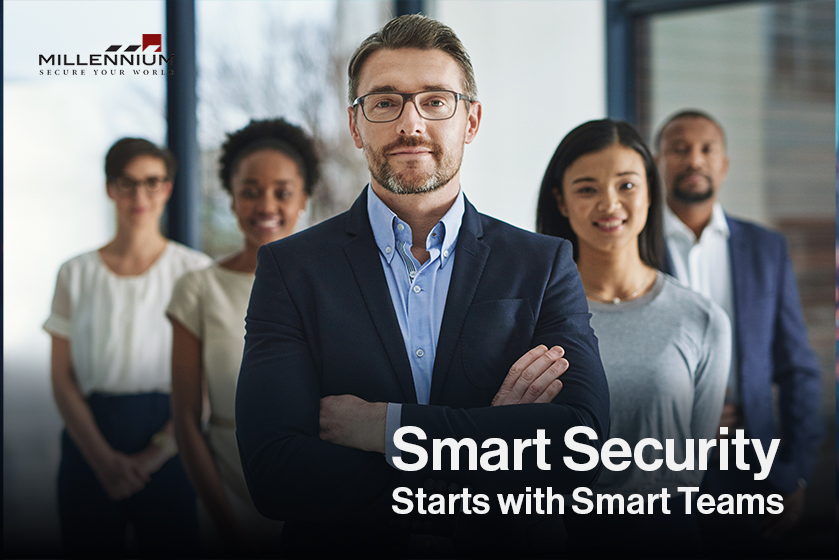
In a world where threats evolve as fast as technology, security is no longer about installing a system and walking away. It’s about building a living, breathing ecosystem—one where people, not just products, play the leading role. And if you’re managing or working with an Access control system, you’re already one of the unsung heroes keeping facilities safe, compliant, and efficient. This blog is for the security managers, IT leads, facilities coordinators, and operations professionals who aren’t just showing up to do a job—they’re shaping the future of secure environments. Why Your Role Matters More Than Ever Today’s Access control system is smarter, more cloud-based, and connected with systems like HR platforms, CCTV, and even HVAC controls. But no matter how advanced the technology, it’s only as good as the team behind it. The professionals who manage and maintain these systems are the backbone of operational security. From setting door schedules and configuring permissions to conducting audits and ensuring compliance, the choices you make affect the entire organization. That’s not just pressure—it’s opportunity. Level Up With Certifications & Specialized Training Professional training isn’t just a resume booster—it’s a strategic advantage. Certifications show that you’re serious about your role and give your team the credibility needed to advocate for resources and upgrades. Look for certifications in areas like: Access Control System Administration Cybersecurity for Physical Security Cloud Security Fundamentals Identity & Access Management (IAM) One real-world example: A facility manager at a large university who earned a cloud-based access control certification was later asked to consult on campus-wide security upgrades—and promoted shortly after. Training opens doors, literally and figuratively. Build Security Awareness Across Departments Being great at your job also means being a great communicator. One of the most underrated parts of access control management is interdepartmental collaboration. Train HR to understand how access connects with onboarding and offboarding. Empower department heads with a clear process for requesting changes. When others understand the “why” behind your security rules, they’re more likely to support them—and you. Create “cheat sheets” or quick guides for team leaders. Host quick monthly security updates or “lunch and learns” to keep everyone engaged. Your visibility across departments turns you into more than an operator. It positions you as a company-wide leader in safety culture. Go Beyond Maintenance: Be a Strategic Thinker Don’t settle for just keeping systems operational. Forward-thinking teams tie security decisions to larger business outcomes. Here’s what that might look like: Are access schedules reducing overtime or streamlining operations? Are your audit logs being used to improve shift planning or incident response? Are you anticipating the next compliance review, not just reacting to it? Strategic thinkers see access control as more than doors and credentials—they see it as a platform to drive efficiency and intelligence. Some companies are even connecting access control data with space utilization tools to make smarter real estate decisions. Network & Learn From Other Pros Plug into the broader security community. Read whitepapers, listen to security podcasts, and attend webinars or trade shows. Follow trends like: Mobile credentials and frictionless access AI in surveillance and analytics Multi-site access control integration Environmental connections (e.g., HVAC, elevators) You’ll find that even one great tip from a peer—like how they reduced false alarms or streamlined remote access—can be a game-changer for your facility. Know Where You Stand: System Check-Ups by Experts Want to level up but not sure where to start? Invite an industry expert to conduct a full Access control system check-up. It’s not just a maintenance visit—it’s a strategic check. This kind of review can uncover: Gaps in your current configuration Opportunities for optimization Security vulnerabilities before they become issues Whether your system is aligned with certification or compliance standards You can even create an internal report or “state of the system” presentation to share findings with leadership. It helps justify budget requests, training needs, or tech upgrades—and demonstrates proactive management. soon, the facilities that have undergone professional assessments and proven their commitment to excellence will be eligible for more than just peace of mind. They’ll be ready for something more official. Download the Cloud Access Control Checklist your 15-step, printable guide to building a secure, scalable, and cloud-ready system. Includes: PoLP setup, MFA guide, permission audit worksheet + a bonus printable template. Click Here Use Recognition Programs to Elevate Your Work You don’t have to wait for outside applause. There are multiple ways to position your work—and your team—as best-in-class: Submit your site for security awards at the local, regional, or national level Apply for building reviews where your Access control system is a highlight Share success stories in internal newsletters or company meetings Use visual dashboards that communicate key wins like response time, failed entry trends, or successful integrations Recognition builds momentum. When leadership sees your work, they’re more likely to invest in the tools and talent you need. Empower the Next Generation Build a legacy by mentoring the next wave of access control professionals. Create in-house documentation. Encourage junior team members to speak up. Celebrate wins openly so that a culture of security—and professional development—thrives beyond you. If your organization has an internship or training program, offer to lead a session. Not only does this enhance your leadership skills, it ensures that future teams are well-prepared to carry the baton. Keep a Pulse on Compliance—Before It Becomes a Problem Security is closely tied to compliance. Whether it’s healthcare, finance, education, or multifamily housing, regulations are evolving rapidly—and many tie directly into your access control practices. Set calendar reminders for quarterly self-checks. Review local, state, and industry-specific standards. Align your Access control system setup with current requirements for data privacy, emergency egress, and access logs. Being proactive keeps you ahead of inspections and builds confidence with leadership. Final Thought: Recognition Follows Impact In the world of security, your best work might go unnoticed—but it doesn’t have to. By embracing training, fostering collaboration, benchmarking your progress, and celebrating success, you create
Cloud Access Management: How to Control & Secure Permissions Effectively
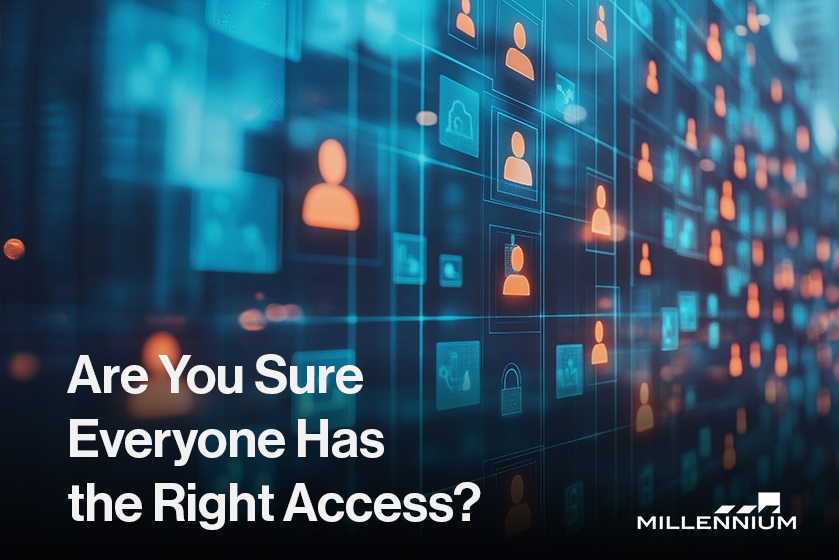
As organizations increasingly migrate their security infrastructure to the cloud, managing access control and permissions has become more important than ever. With cloud-based systems offering convenience and scalability, it’s crucial to ensure that only the right individuals have access to the right resources at the right time. Poorly managed access policies can lead to unauthorized entry, data breaches, and compliance risks. In this guide, we’ll explore how to effectively manage permissions in a cloud access control system. We’ll walk through key concepts like Role-Based Access Control (RBAC) and Access Control Lists (ACLs), and share practical best practices. Whether you’re securing a small office or a large healthcare facility, these strategies will help you build a robust access control framework. Understanding Cloud Access Management Cloud access management refers to the process of defining, enforcing, and monitoring who can access which parts of your digital and physical infrastructure—and under what conditions. Done right, this ensures that only authorized users are allowed in, while keeping intruders or unauthorized personnel out. A strong access management plan reduces the risks of internal threats, human error, and external attacks, making your business more secure and compliant. Core Components of Cloud Access Management: Authentication: Verifying user identity through usernames, passwords, biometrics, or tokens. Authorization: Granting or restricting access based on user roles, shifts, and security policies. Audit & Monitoring: Recording who accessed what, when, and from where, to catch suspicious activity. Policy Enforcement: Automatically applying access rules based on roles, time of day, device used, and even geographic location. Role-Based Access Control (RBAC) RBAC is one of the most effective and scalable methods for managing access permissions in cloud-based environments. Instead of assigning individual access rights to each user, RBAC groups users by role and grants permissions to each role. How RBAC Works: Employees are grouped by job function (e.g., receptionist, facilities manager, security guard). Each role has a set of predefined permissions. When a user is assigned to a role, they inherit all of its access rights. Example: A security manager may have the ability to adjust access schedules, review audit logs, and configure alarm triggers. In contrast, a temporary contractor might only be allowed to access a single entrance between 9 AM and 5 PM. Benefits of RBAC: ✔ Reduces the likelihood of human error by avoiding over-permissioning. ✔ Makes compliance easier by aligning access rights with regulatory needs. ✔ Saves time when onboarding new staff—just assign them to a role. ✔ Scales effortlessly as your team or building size grows. Access Control Lists (ACLs) While RBAC is great for broad control, sometimes you need finer control—this is where ACLs come in. ACLs let administrators define specific users who can access specific resources. Think of it as a detailed access list that overrides or complements role permissions. How ACLs Work: You can assign or deny access for individual users or groups to specific doors, systems, or data. Access rights are not tied to roles, but to user identities or departments. Example: In a hospital setting, only certified radiologists might be allowed access to MRI rooms, while administrative staff are restricted. ACL Advantages: ✔ Allows more detailed, specific access configurations. ✔ Supports edge-case scenarios like temporary projects, after-hours access, or emergency overrides. ✔ Can be layered with RBAC for even greater flexibility and security. Personalized Permissions for Real-World Scenarios A major advantage of cloud-based access control systems is the ability to set permissions for individual users—beyond the general role-based model. For instance: If two employees share the same office but work different shifts, managers can program the system so each person can only access the facility during their designated shift. You can blacklist individuals from the system entirely, such as former employees or those flagged due to compliance violations. In industries like healthcare, this is especially critical to prevent unauthorized access to sensitive areas like pharmaceutical storage or patient records. This level of control allows businesses to align security with actual operational needs, not just generic policies. Download the Cloud Access Control Checklist your 15-step, printable guide to building a secure, scalable, and cloud-ready system. Includes: PoLP setup, MFA guide, permission audit worksheet + a bonus printable template. Click Here Best Practices for Securing Cloud-Based Access Control To maximize the value and security of your cloud access control system, consider these proven best practices: Apply the Principle of Least Privilege (PoLP) Only give users the exact level of access they need—nothing more. This reduces the risk of misuse and limits damage if credentials are compromised. Use Multi-Factor Authentication (MFA) MFA adds a second (or third) layer of verification beyond passwords, such as a fingerprint or one-time code sent to a phone. Schedule Regular Access Reviews Business needs change—so should your permissions. Set quarterly or biannual audits to ensure access rights are still appropriate. Enable Logging and Monitoring Track and store access data to help you identify trends, detect suspicious activity, and provide audit trails for compliance. Integrate IAM Solutions Identity and Access Management (IAM) platforms help centralize access policies across all your systems, making it easier to stay consistent and secure. Millennium Ultra Users: You’re Already Ahead If you’re using Millennium Ultra 8.0 or higher, you’re already ahead of the game. Ultra comes equipped with robust IAM-like capabilities built right into the platform. From user permissions and role-based access to scheduled and door-specific access rules, Ultra gives you the tools to manage identities and access points without needing an additional IAM platform. And if your environment uses centralized identity tools, Ultra can work alongside them to synchronize users and help maintain consistent access policies across your systems. So whether you’re going all-in with Ultra’s built-in tools or integrating with external IAM solutions, your access control remains secure, streamlined, and scalable. Future-Proofing with Cloud One of the biggest reasons businesses are turning to cloud-based access control is flexibility. Cloud platforms can be updated remotely, managed from any location, and scaled instantly as your needs grow. Need to add a new door or
Cloud-Based vs. On-Premise Access Control: Pros, Cons & What to Consider
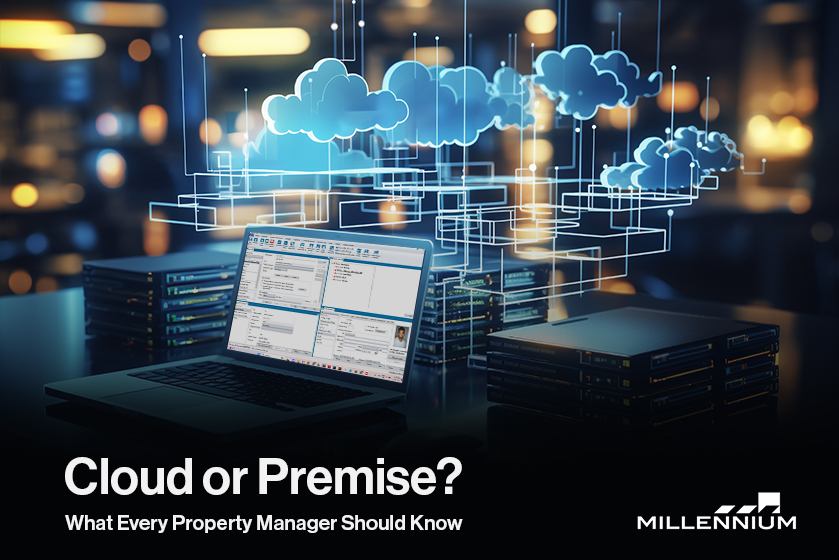
When securing your facility, choosing the right access control system can make all the difference. With technology advancing at lightning speed, businesses now have to choose between cloud-based and on-premise access control systems—or perhaps a combination of both. In this blog, we’ll explore the pros and cons of each while also introducing a hybrid model that might just be the perfect fit for your needs. In a world where businesses are facing an ever-increasing demand for flexibility and scalability, choosing the right security infrastructure has become more crucial than ever. But which option should you go for? The traditional on-premise solution or the more modern cloud-based system—or could a hybrid model be the best of both worlds? Let’s dive into the details of these security solutions and help you make an informed decision. What is Cloud-Based Access Control? Cloud-based access control systems use remote servers to store and manage your security data, accessible via the internet. This model allows administrators to oversee security events, manage access permissions, and integrate with other systems from anywhere in the world—whether you’re across the street or halfway around the globe. The cloud-based approach is a game changer for businesses that need flexibility and scalability. With everything managed remotely, there’s no need for heavy on-site infrastructure, and the system can easily scale up as your business grows. For businesses with remote locations, multi-site operations, or the need to quickly adapt to new challenges, cloud-based access control can be a lifesaver. Cloud systems are especially advantageous for organizations looking to integrate various technologies seamlessly. Imagine integrating your access control system with your building’s HVAC system or automating key management processes—cloud systems make it easier than ever to connect all your tools. Pros of Cloud-Based Access Control: Remote Access & Flexibility: Monitor and manage your system from anywhere with an internet connection, giving you the power to respond to security events in real time, no matter where you are. Scalability: Easily scale the system to match your evolving needs, without the hassle of physical upgrades. Need to add new doors, sensors, or access points? With a cloud system, it’s as simple as a few clicks. Lower Initial Investment: No need for costly on-site servers or hardware, keeping upfront costs low. Cloud-based systems are an attractive option for businesses that want to reduce capital expenses. Automatic Software Updates: Rest easy knowing your system is always up to date without needing manual intervention. This ensures you’re protected from the latest security threats. Reduced Maintenance Costs: The service provider handles system updates, backups, and troubleshooting, saving you time and money. Without the burden of on-site hardware maintenance, your internal team can focus on other priorities. Cons of Cloud-Based Access Control: Dependence on Internet Connectivity: A stable internet connection is essential for managing and accessing the system remotely. While cloud-based systems are generally reliable, poor connectivity can affect your ability to manage your security system in real-time. Ongoing Subscription Fees: While the system has a lower upfront cost, there are subscription fees to consider over time. However, when you compare this to the overall cost of maintaining on-premise systems, many businesses find the subscription fees to be a cost-effective option, especially considering the savings on maintenance and infrastructure. Potential Security Concerns: Though most cloud providers use robust encryption, some businesses may be wary of storing sensitive data off-site. It’s important to vet your cloud provider thoroughly to ensure they meet your security and compliance requirements. Internet Reliability: Cloud-based systems rely on an internet connection for data transmission, which can cause issues if you experience outages. Many providers mitigate this risk with local backup systems that sync data once the internet connection is restored. What is On-Premise Access Control? On-premise access control systems, in contrast, rely on physical servers and infrastructure that are kept on-site. Businesses are responsible for owning and maintaining the equipment, while managing all data, configurations, and system settings locally. For many businesses, especially those in highly regulated industries or handling sensitive data, on-premise systems have been a trusted choice. In sectors like critical infrastructure, government, or healthcare, on-premise solutions provide an added layer of control and security that can be important for meeting specific regulatory requirements. Pros of On-Premise Access Control: Full Control: You manage everything, from system settings to maintenance and security. This gives you complete control over your infrastructure and data. Higher Security: Since everything is stored on-site, there’s no reliance on the cloud for storing sensitive data. This is crucial for businesses with strict security protocols or those operating in sensitive industries. Customizable Infrastructure: Tailor the system to your exact needs and integrate it with existing on-site technologies. If you have legacy systems or specialized hardware, on-premise solutions offer the flexibility to create a more customized approach. Cons of On-Premise Access Control: Higher Upfront Costs: You’ll need to invest in servers, hardware, and physical infrastructure, which can be expensive. This initial investment can be a significant barrier to entry for some organizations. Ongoing Maintenance: You’re responsible for regular updates, repairs, and ensuring system security. This requires an internal IT team to manage and maintain the infrastructure, leading to additional operational costs. Limited Remote Access: Remote management is not typically available out of the box for most on-premise systems. While it is still possible to access the system remotely in certain setups, it usually requires VPNs or remote desktop configurations—along with proper training and a certain level of technical knowledge for employees. This can make managing the system on the go less convenient compared to cloud-based solutions. Scalability Challenges: Expanding the system usually requires additional hardware and upgrades, which can be costly and time-consuming. As your business grows, so do the costs and complexities associated with scaling up on-premise systems. Key Differences Between On-Premise vs. Cloud Security Before deciding which option works best for your organization, it’s essential to understand the fundamental differences between cloud and on-premise security systems: Infrastructure: On-premise solutions require physical infrastructure—servers, storage devices, and
Why Your Access Control System Needs Mobile Configuration and Wet Contacts
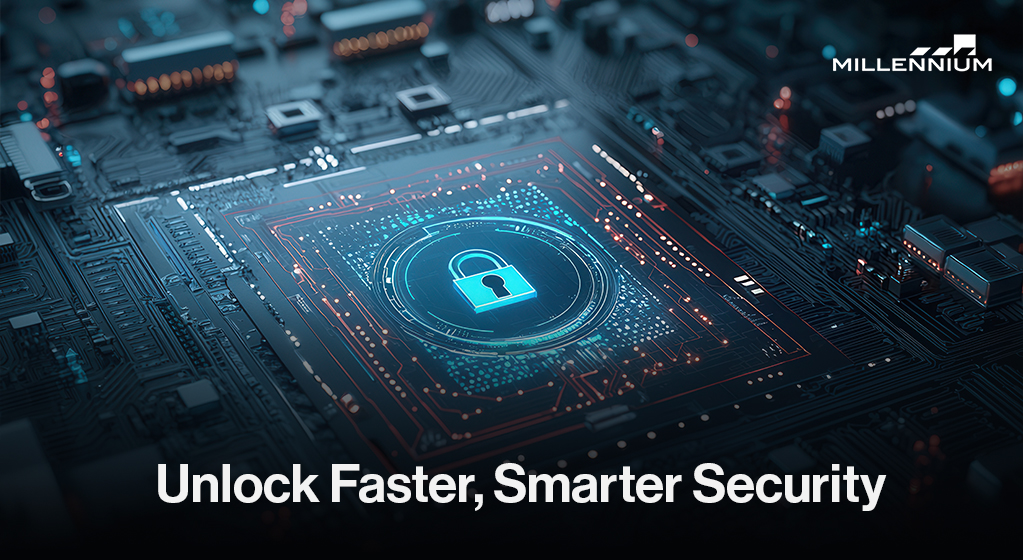
When investing in an Enterprise Access Control System, businesses expect reliability, security, and long-term support. Unfortunately, not all suppliers share this commitment. Some access control providers prioritize profits over customer satisfaction by discontinuing support for older hardware, forcing unnecessary upgrades, and making existing boards obsolete. On the other hand, companies that manufacture their own boards instead of outsourcing prioritize longevity, ensuring businesses can continue using their Access Control System without disruptions while still benefiting from continuous software advancements. So, why is it crucial to choose a supplier that truly stands by their product? Let’s explore the impact of forced upgrades and why selecting a reliable partner is essential. The Hidden Cost of Forced Hardware Upgrades Many Access Control System suppliers employ a strategy of planned obsolescence—phasing out older models to push customers into costly hardware replacements. This practice has significant financial and operational consequences for businesses. Unnecessary Capital Expenditure When a supplier stops supporting existing hardware, businesses must allocate substantial funds to replace fully functional systems. This diverts resources from other essential security investments and operational needs. Instead of being forced into reactive spending, organizations should have the choice to allocate budgets where they see fit. Operational Disruptions and Downtime Replacing an entire Enterprise Access Control System is not just expensive; it’s also disruptive. Hardware changes require installations, integrations, and testing, all of which can lead to downtime. This downtime impacts security, efficiency, and daily business operations—leaving organizations vulnerable to security risks and delays. Lack of Flexibility and Vendor Lock-in Some access control providers design their systems in a way that locks customers into a proprietary ecosystem, preventing interoperability with other security solutions. This forces businesses to remain dependent on a single vendor, even when better or more cost-effective solutions are available. A truly reliable Access Control System provider should offer long-term compatibility and the flexibility to upgrade when necessary—without forcing businesses into costly and unnecessary hardware transitions. Supporting Legacy Hardware: A Smarter Approach Forward-thinking manufacturers understand that access control is a long-term investment. Instead of forcing customers into endless upgrade cycles, these companies prioritize product longevity and continuous support. Here’s how they do it: Providing software updates that enhance security and introduce new features without requiring new hardware. Offering maintenance and technical support for legacy systems, ensuring businesses don’t face sudden service interruptions. Manufacturing their own access control boards, granting greater control over long-term product support and hardware quality. If a supplier truly believes in their product, they will focus on maximizing the lifespan of their Enterprise Access Control System rather than pushing unnecessary upgrades. The Benefits of Choosing a Supplier That Supports Your Hardware By choosing an Access Control System provider that prioritizes long-term usability, businesses can enjoy a range of advantages that save costs, reduce risks, and improve security infrastructure. Extended System Lifespan A well-designed Enterprise Access Control System should function for years without requiring full hardware replacements. Companies that manufacture their own boards maintain better quality control and offer longer-lasting support compared to those relying on third-party manufacturers. Seamless Software Updates Without Hardware Changes A reputable access control provider will focus on enhancing software capabilities—offering improved security, analytics, and integrations—without forcing businesses to invest in new hardware. Ongoing Maintenance and Spare Parts Availability Suppliers that manufacture their own boards can ensure continued access to spare parts and maintenance support, reducing the risk of sudden product discontinuation. Better Investment Allocation Instead of spending budget on forced hardware upgrades, businesses can allocate resources towards expanding security coverage, implementing new integrations, and enhancing user experiences. Compliance and Security Updates Without Extra Costs A reliable Access Control System provider ensures that businesses can maintain compliance with industry regulations through software updates, rather than forcing new hardware purchases to meet evolving security standards. Sustainability and Environmental Responsibility E-waste is a growing concern, and replacing entire security systems unnecessarily contributes to environmental harm. A responsible Enterprise Access Control System supplier designs durable hardware that integrates with ongoing software improvements, reducing electronic waste and supporting sustainability efforts. Greater Control Over Security and Infrastructure Companies that manufacture their own access control boards ensure customers have control over their security infrastructure. Unlike resellers who depend on third-party manufacturers, these suppliers guarantee consistent performance, long-term support, and the flexibility to upgrade only when needed. Scalability Without Hardware Replacement A high-quality Enterprise Access Control System is designed to grow with your business. Whether expanding to new locations or integrating advanced security features, businesses should have the flexibility to scale without replacing existing hardware. Contact Us And See Our System In Action Free Demo The Difference Between a True Manufacturer and a Reseller One of the most critical factors when selecting an Access Control System supplier is whether they manufacture their own boards or rely on third-party vendors. This distinction affects everything from product longevity to customer support. Why It Matters: Manufacturers control product longevity and can offer long-term hardware and software support. Resellers depend on third-party availability, which often leads to discontinued products and forced customer upgrades. Manufacturers ensure software and hardware compatibility, creating a seamless and reliable security system. Choosing a supplier that manufactures their own access control boards ensures long-term stability, consistent quality, and ongoing support. Real-World Example: The Cost of Choosing the Wrong Supplier Imagine a business investing in an Enterprise Access Control System from a vendor that outsources hardware production. Within five years, the vendor announces that their hardware partner has discontinued that hardware, making the system obsolete. The business is now forced to: Purchase new hardware at a significant cost Undergo a time-consuming transition that disrupts daily operations Retrain security personnel on an entirely new system Had they chosen a manufacturer that makes their software backups compatible, they could have continued using their existing infrastructure, adding different hardware within the same platform while benefiting from regular software enhancements. Final Thoughts: Choose a Partner, Not Just a Supplier When selecting an Enterprise Access Control System, businesses must look beyond flashy features and competitive pricing. A
Why You Shouldn’t Choose a Supplier Who Abandons Their Products: The True Cost of Forced Upgrades
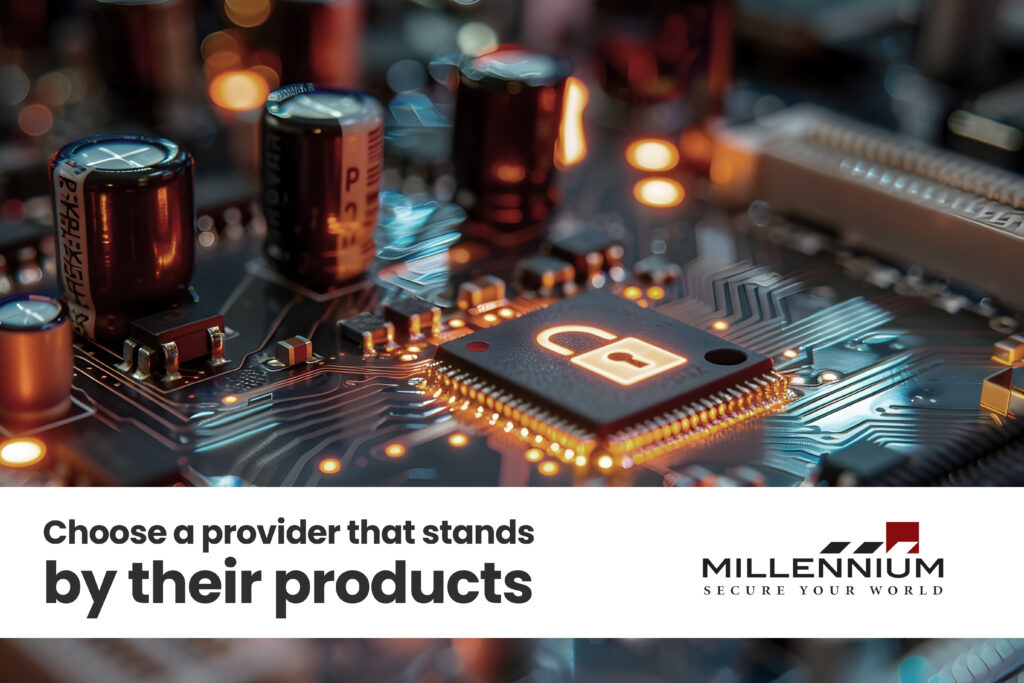
When investing in an Enterprise Access Control System, businesses expect reliability, security, and long-term support. Unfortunately, not all suppliers share this commitment. Some access control providers prioritize profits over customer satisfaction by discontinuing support for older hardware, forcing unnecessary upgrades, and making existing boards obsolete. On the other hand, companies that manufacture their own boards instead of outsourcing prioritize longevity, ensuring businesses can continue using their Access Control System without disruptions while still benefiting from continuous software advancements. So, why is it crucial to choose a supplier that truly stands by their product? Let’s explore the impact of forced upgrades and why selecting a reliable partner is essential. The Hidden Cost of Forced Hardware Upgrades Many Access Control System suppliers employ a strategy of planned obsolescence—phasing out older models to push customers into costly hardware replacements. This practice has significant financial and operational consequences for businesses. Unnecessary Capital Expenditure When a supplier stops supporting existing hardware, businesses must allocate substantial funds to replace fully functional systems. This diverts resources from other essential security investments and operational needs. Instead of being forced into reactive spending, organizations should have the choice to allocate budgets where they see fit. Operational Disruptions and Downtime Replacing an entire Enterprise Access Control System is not just expensive; it’s also disruptive. Hardware changes require installations, integrations, and testing, all of which can lead to downtime. This downtime impacts security, efficiency, and daily business operations—leaving organizations vulnerable to security risks and delays. Lack of Flexibility and Vendor Lock-in Some access control providers design their systems in a way that locks customers into a proprietary ecosystem, preventing interoperability with other security solutions. This forces businesses to remain dependent on a single vendor, even when better or more cost-effective solutions are available. A truly reliable Access Control System provider should offer long-term compatibility and the flexibility to upgrade when necessary—without forcing businesses into costly and unnecessary hardware transitions. Supporting Legacy Hardware: A Smarter Approach Forward-thinking manufacturers understand that access control is a long-term investment. Instead of forcing customers into endless upgrade cycles, these companies prioritize product longevity and continuous support. Here’s how they do it: Providing software updates that enhance security and introduce new features without requiring new hardware. Offering maintenance and technical support for legacy systems, ensuring businesses don’t face sudden service interruptions. Manufacturing their own access control boards, granting greater control over long-term product support and hardware quality. If a supplier truly believes in their product, they will focus on maximizing the lifespan of their Enterprise Access Control System rather than pushing unnecessary upgrades. The Benefits of Choosing a Supplier That Supports Your Hardware By choosing an Access Control System provider that prioritizes long-term usability, businesses can enjoy a range of advantages that save costs, reduce risks, and improve security infrastructure. Extended System Lifespan A well-designed Enterprise Access Control System should function for years without requiring full hardware replacements. Companies that manufacture their own boards maintain better quality control and offer longer-lasting support compared to those relying on third-party manufacturers. Seamless Software Updates Without Hardware Changes A reputable access control provider will focus on enhancing software capabilities—offering improved security, analytics, and integrations—without forcing businesses to invest in new hardware. Ongoing Maintenance and Spare Parts Availability Suppliers that manufacture their own boards can ensure continued access to spare parts and maintenance support, reducing the risk of sudden product discontinuation. Better Investment Allocation Instead of spending budget on forced hardware upgrades, businesses can allocate resources towards expanding security coverage, implementing new integrations, and enhancing user experiences. Compliance and Security Updates Without Extra Costs A reliable Access Control System provider ensures that businesses can maintain compliance with industry regulations through software updates, rather than forcing new hardware purchases to meet evolving security standards. Sustainability and Environmental Responsibility E-waste is a growing concern, and replacing entire security systems unnecessarily contributes to environmental harm. A responsible Enterprise Access Control System supplier designs durable hardware that integrates with ongoing software improvements, reducing electronic waste and supporting sustainability efforts. Greater Control Over Security and Infrastructure Companies that manufacture their own access control boards ensure customers have control over their security infrastructure. Unlike resellers who depend on third-party manufacturers, these suppliers guarantee consistent performance, long-term support, and the flexibility to upgrade only when needed. Scalability Without Hardware Replacement A high-quality Enterprise Access Control System is designed to grow with your business. Whether expanding to new locations or integrating advanced security features, businesses should have the flexibility to scale without replacing existing hardware. Contact Us And See Our System In Action Free Demo The Difference Between a True Manufacturer and a Reseller One of the most critical factors when selecting an Access Control System supplier is whether they manufacture their own boards or rely on third-party vendors. This distinction affects everything from product longevity to customer support. Why It Matters: Manufacturers control product longevity and can offer long-term hardware and software support. Resellers depend on third-party availability, which often leads to discontinued products and forced customer upgrades. Manufacturers ensure software and hardware compatibility, creating a seamless and reliable security system. Choosing a supplier that manufactures their own access control boards ensures long-term stability, consistent quality, and ongoing support. Real-World Example: The Cost of Choosing the Wrong Supplier Imagine a business investing in an Enterprise Access Control System from a vendor that outsources hardware production. Within five years, the vendor announces that their hardware partner has discontinued that hardware, making the system obsolete. The business is now forced to: Purchase new hardware at a significant cost Undergo a time-consuming transition that disrupts daily operations Retrain security personnel on an entirely new system Had they chosen a manufacturer that makes their software backups compatible, they could have continued using their existing infrastructure, adding different hardware within the same platform while benefiting from regular software enhancements. Final Thoughts: Choose a Partner, Not Just a Supplier When selecting an Enterprise Access Control System, businesses must look beyond flashy features and competitive pricing. A
Corporate Compliance Made Easy: Leveraging Physical Access Control for Regulatory Adherence
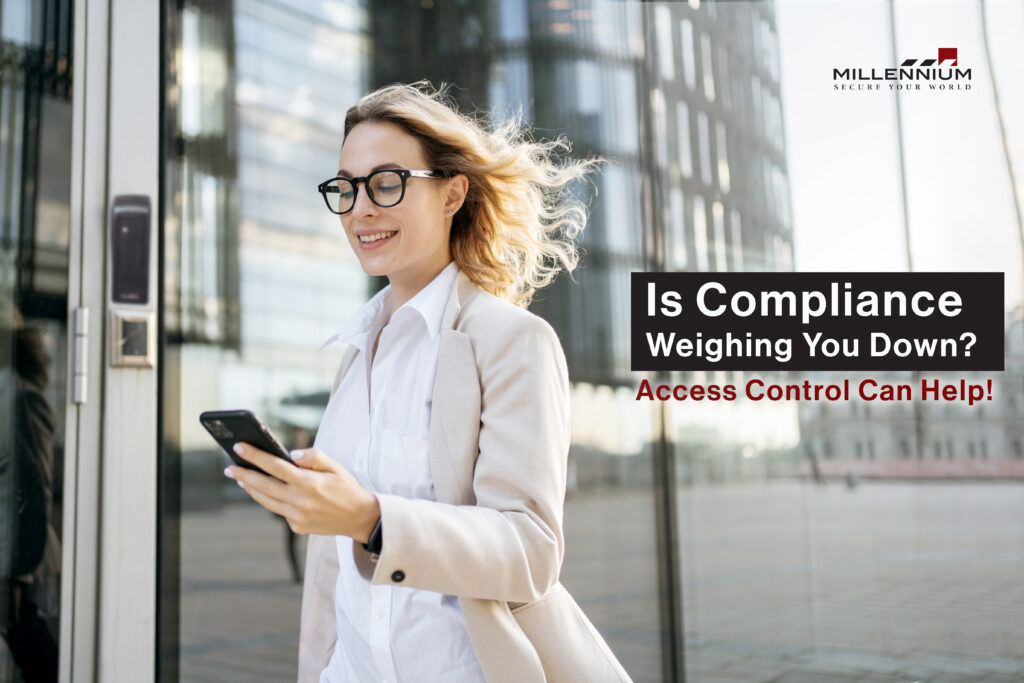
In today’s corporate landscape, compliance with industry-specific regulations is not just a legal obligation but a cornerstone of reputation and trust. Organizations across industries—from healthcare to finance, manufacturing to education—face increasing scrutiny to ensure data security, employee safety, and operational integrity. Achieving this compliance, however, can be a daunting task. Enter the Physical Access Control System, a powerful solution that not only secures your workplace but also simplifies regulatory adherence. Here’s how implementing a Physical Access Control System can help your organization meet compliance standards while enhancing overall security. The Compliance Challenge: Why It’s Critical Compliance requirements vary significantly across industries. For instance: Healthcare organizations must comply with HIPAA regulations to protect patient data. Financial institutions face strict guidelines under PCI DSS and SOX for safeguarding sensitive financial information. Manufacturing and logistics companies must adhere to OSHA standards to ensure workplace safety. Education institutions need to meet FERPA standards to protect student records. Failure to comply can lead to severe consequences, including hefty fines, legal battles, and irreparable damage to your brand’s reputation. The challenge lies in managing these diverse requirements while maintaining day-to-day operations seamlessly. This is where a robust Physical Access Control System becomes indispensable. Key Features of Physical Access Control Systems for Compliance Modern Physical Access Control Systems are designed with features that align with regulatory requirements, making it easier for organizations to achieve and maintain compliance. Let’s explore these features: 1. Detailed Audit Trails One of the primary compliance requirements across industries is the ability to monitor and document access to sensitive areas or data. Physical Access Control Systems provide detailed audit trails that track: Who accessed a particular area. The exact time and duration of access. Any failed attempts to enter restricted zones. These records can be invaluable during audits or investigations, ensuring transparency and accountability. 2. Restricted Area Access Compliance standards often mandate that sensitive areas—such as server rooms, R&D labs, or executive offices—be accessible only to authorized personnel. Physical Access Control Systems enforce these restrictions effectively by: Assigning unique credentials to employees based on their roles. Using multi-factor authentication (MFA) for added security. Limiting access to specific times or days, depending on operational needs. For example, in healthcare, access to medical records storage can be restricted to authorized personnel only, ensuring HIPAA compliance. 3. Customizable Permissions Different roles require different levels of access. With an Physical Access Control System, permissions can be customized to suit your organization’s hierarchy and operational requirements. This granular control ensures that: Employees access only what they need to perform their jobs. Temporary staff or contractors are granted limited access for specific periods. Changes in roles or responsibilities are quickly reflected in access permissions. This flexibility helps organizations align with compliance requirements while maintaining operational efficiency. 4. Integration with Compliance Software Many Physical Access Control Systems integrate seamlessly with compliance management platforms, enabling automated reporting and real-time monitoring. This reduces the administrative burden of compliance and ensures that you stay ahead of regulatory changes. 5. Emergency Lockdown Capabilities In emergencies, such as active shooter situations or natural disasters, compliance regulations often require organizations to have lockdown protocols in place. Physical Access Control Systems enable rapid lockdowns to secure the premises and ensure the safety of employees and visitors. Industry-Specific Applications of Access Control for Compliance Healthcare In addition to HIPAA, healthcare providers must adhere to CMS and Joint Commission standards. Physical Access Control Systems help by: Restricting access to patient files and medication storage. Providing electronic logs for audits. Ensuring compliance with infection control protocols through touchless entry systems. Finance Financial institutions face rigorous compliance standards under regulations like PCI DSS and GLBA. Physical Access Control Systems simplify compliance by: Monitoring access to data centers and vaults. Enforcing MFA for all employees. Generating compliance reports for regulatory agencies. Education Schools and universities must protect student records under FERPA and ensure campus safety. Access Control helps by: Controlling access to administrative offices and dormitories. Providing real-time monitoring of campus activity. Creating detailed records for state and federal audits. Manufacturing Manufacturing facilities must comply with OSHA and other safety standards. Physical Access Control Systems assist by: Restricting access to hazardous areas. Monitoring compliance with safety training requirements. Automating incident reporting processes. The Future of Compliance: Cloud-Based Access Control Systems As regulatory landscapes evolve, organizations need future-proof solutions to stay compliant. Cloud-based Physical Access Control Systems offer several advantages: Remote Management: Administrators can manage permissions, monitor activity, and generate compliance reports from anywhere. Scalability: Easily adapt to changes in organizational size or compliance requirements. Real-Time Updates: Stay ahead of regulatory changes with software updates and integrations. These systems not only enhance security but also provide the flexibility needed to meet dynamic compliance demands. Why Compliance Is a Continuous Journey Regulatory adherence is not a one-time achievement but an ongoing process. As regulations evolve, organizations must adapt their security measures to maintain compliance. A Physical Access Control System provides the tools and flexibility needed to navigate this journey with confidence. Conclusion: Simplify Compliance with Access Control Compliance doesn’t have to be a headache. With the right Physical Access Control System, your organization can meet regulatory requirements while enhancing security, productivity, and peace of mind. From detailed audit trails to customizable permissions and cloud-based solutions, modern Physical Access Control Systems empower businesses to stay compliant in an ever-changing landscape. Ready to elevate your compliance strategy and enhance security? Book a demo today to learn how our cutting-edge Physical Access Control Systems can transform your organization. Millennium is a scalable, hosted, access control platform that services any type of real estate. Our cloud-based solution allows managers and tenants to efficiently manage their physical security from anywhere while enhancing experience and driving profitability.
Enhancing Workplace Security: The Impact & Importance of Office Access Control
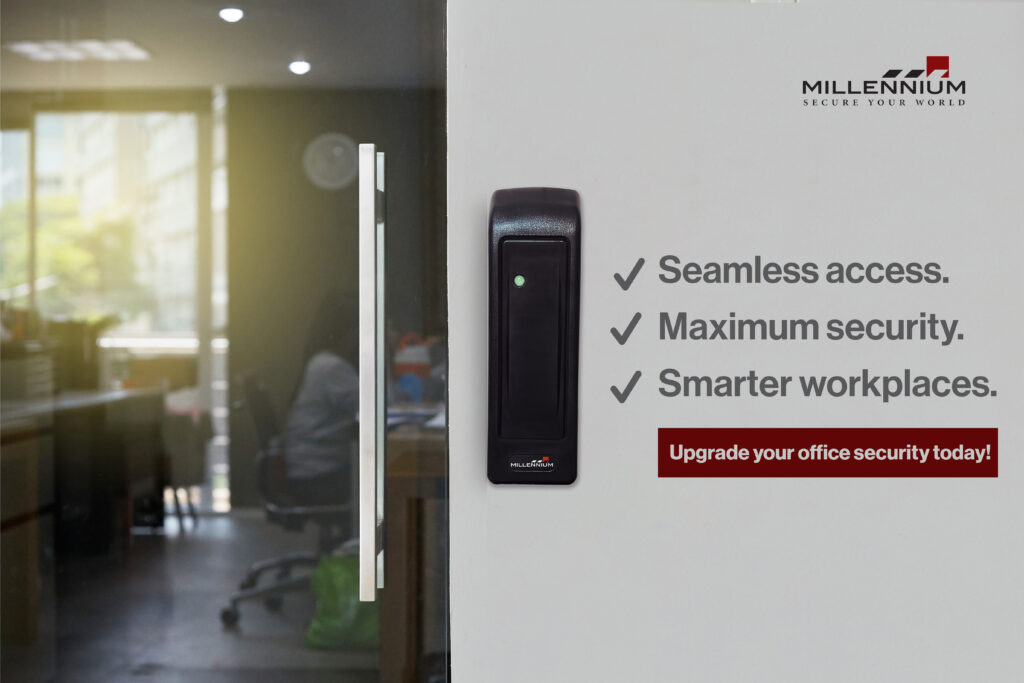
In today’s fast-evolving corporate landscape, ensuring the safety and security of office spaces is no longer just an operational necessity; it has become a critical component of organizational success.Modern office access control systems are revolutionizing the way businesses secure their workplaces, offering advanced features that go beyond traditional lock-and-key methods. From improving operational efficiency to enhancing employee safety, these systems are designed to meet the unique challenges of contemporary office environments. Why Office Access Control Systems Matter in Modern Workplaces?Security breaches have the potential to disrupt operations, compromise sensitive data, and erode employee trust. According to a recent study by MarketsandMarkets, the global access control system market is expected to grow from USD 10.4 billion in 2024 to USD 15.2 billion by 2029, reflecting a compound annual growth rate (CAGR) of 7.8% (Source). This growth highlights the increasing reliance on cutting-edge office access control to address the demands of modern enterprises.Companies are adopting office access control not only to strengthen their physical security but also to streamline access management, improve compliance, and enhance the overall workplace experience. These systems provide businesses with the tools they need to adapt to changing workforce dynamics, such as remote work policies and flexible schedules. Types of Office Access Control Systems: Transforming Workplace Security Office access control systems come in various forms, each offering unique capabilities tailored to organizational needs. Here are some of the most popular types used in modern workplaces: 1. RFID Badges and Smart CardsOne of the most commonly used methods, RFID (Radio Frequency Identification) badges and smart cards, provide a seamless way for employees to gain access to secured areas. These cards are: Convenient: Lightweight and easy to carry. Customizable: Can be programmed for specific access levels. Secure: Easily deactivated if lost or stolen, reducing security risks. 2. Mobile Access Control for OfficeSmartphones have become an integral part of our lives, and their integration into enterprise access control systems is a natural progression. Mobile access control for offices allows employees to use their smartphones as digital keys via secure applications. This method offers: Convenience: Eliminates the need for physical cards or keys. Eco-Friendliness: Reduces plastic waste associated with traditional badges. Enhanced Security: Multi-factor authentication options for added layers of protection. 3. Biometric Office Access Control SystemsBiometric systems use unique biological traits such as fingerprints, facial recognition, or iris scans to grant access. These office access control systems are ideal for high-security environments and offer: Unparalleled Accuracy: Ensures only authorized personnel can gain entry. Non-Transferability: Unlike cards or keys, biometrics cannot be shared. Ease of Use: Quick and seamless access for employees. 4. Cloud-Based Office Access ControlCloud-based office access control systems offer unparalleled flexibility and scalability. These systems allow administrators to manage access remotely, making them ideal for businesses with multiple locations. Key benefits include: Centralized Management: Manage access for all locations from a single platform. Real-Time Updates: Instantly adjust access permissions as needed. Cost-Effectiveness: Reduces the need for on-site servers and IT infrastructure. 5. Keyless Entry Systems for OfficesKeyless entry systems for offices eliminate the need for traditional keys, relying instead on PIN codes, mobile credentials, or biometrics. These systems are especially useful in shared office spaces or co-working environments, where access needs to be frequently updated. Contact Us And See Our System In Action Free Demo The Benefits of Office Access Control Systems Implementing an office access control system offers numerous advantages beyond basic security. Here are some of the key benefits: 1. Enhanced SecurityModern office access control systems provide robust security features that protect against unauthorized access. These systems can: Restrict access to sensitive areas. Provide detailed access logs for auditing purposes. Prevent tailgating through advanced detection technologies. 2. Improved Operational EfficiencyAutomating access management saves time and reduces administrative burdens. With features such as scheduled access and real-time monitoring, businesses can: Streamline visitor management processes. Easily onboard and offboard employees. Reduce the risk of human error. 3. Compliance with Regulatory StandardsMany industries are subject to strict security and privacy regulations. Office access control systems help businesses: Meet compliance requirements. Protect sensitive data and assets. Demonstrate accountability through detailed access records. 4. Enhanced User ExperienceA well-designed office access control system enhances the overall workplace experience by: Reducing friction during entry and exit. Providing employees with convenient access options. Creating a secure and welcoming environment. 5. Scalability and AdaptabilityAs businesses grow and evolve, their security needs change. Office access control systems are designed to: Scale with the organization. Adapt to new technologies and workplace trends. Integrate seamlessly with existing systems. Real-World Applications of Office Access Control Systems 1. Corporate OfficesOffice access control systems are widely used in corporate offices to manage employee and visitor access. By implementing features such as zone-based access and real-time monitoring, businesses can: Protect sensitive areas like server rooms and executive offices. Monitor employee movement for compliance and security purposes. Provide temporary access to contractors or vendors. 2. Co-Working SpacesCo-working spaces face unique security challenges due to their shared nature. Office access control systems enable these spaces to: Grant access based on membership levels. Restrict access to private meeting rooms. Track usage patterns for better resource allocation. Secure Your Office Space Today Don’t leave your office security to chance. Upgrade to a modern office access control system and experience the benefits of enhanced security, improved efficiency, and a better workplace experience. Whether you need RFID badges, mobile access, or a complete office access control system, we’ve got you covered.Contact us today to schedule a consultation and learn how our cutting-edge solutions can transform your office security. Take the first step towards a safer, smarter, and more secure workplace! Millennium is a scalable, hosted, access control platform that services any type of real estate. Our cloud-based solution allows managers and tenants to efficiently manage their physical security from anywhere while enhancing experience and driving profitability.
Revolutionizing Security and Engagement: Gym Access Control in Multi-Use Buildings
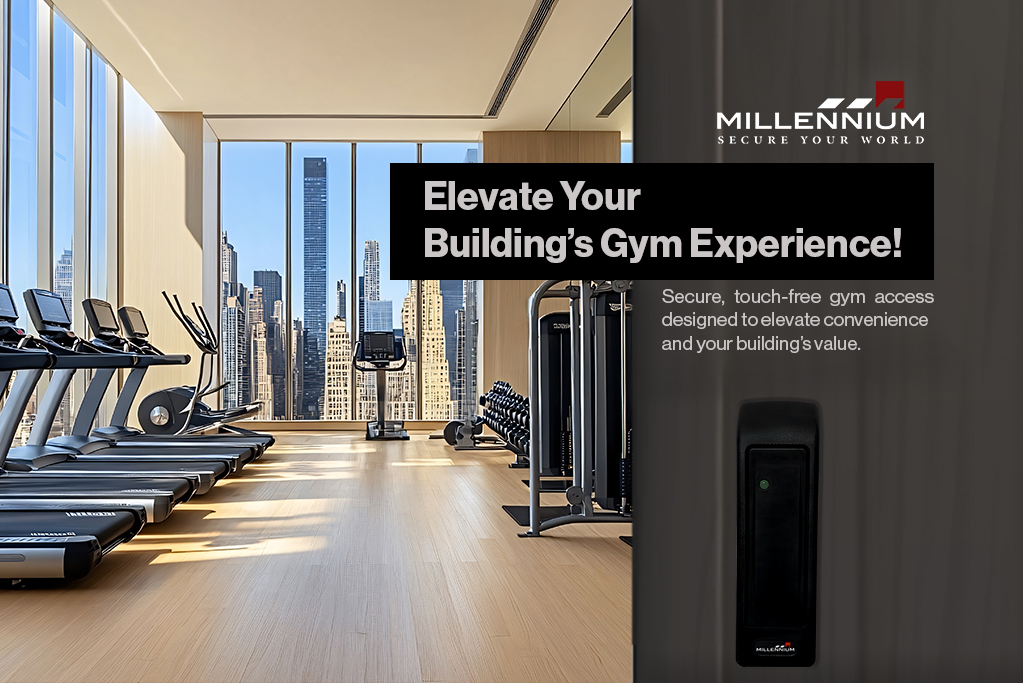
Gyms within high-rises, schools, universities, and corporate campuses have evolved into vital components of modern facilities. Beyond serving as fitness hubs, these gyms contribute significantly to the security and management of buildings that house them. With the adoption of advanced Gym Access Control Systems, these spaces can foster wellness, efficiency, and safety, creating an all-encompassing benefit for tenants, employees, and students alike. The Role of Access Control in Enhancing Security A study by Allied Market Research projects that the global access control market will reach $15 billion by 2027, driven by the demand for more secure and efficient management solutions in multi-use facilities. Facilities that adopt advanced access control systems experience a 30% reduction in operational costs and a 25% increase in user retention due to improved security and user experience (Source). In multi-use environments, gyms are not always high-traffic spaces. This intermittent usage creates vulnerabilities that can compromise overall building security if not managed properly. Implementing a Gym Access Control System not only secures the gym but also enhances the safety of the entire building by: Restricting unauthorized access. Monitoring traffic patterns for security analysis. Offering insights into peak and low usage times, allowing staff to allocate resources effectively. Gym Access Control: A Solution for Modern Multi-Use Spaces High-Rises and Condominiums In residential buildings, gyms are key amenities that attract tenants and homeowners. Securing these spaces effectively benefits the entire property: Resident-Only Access: Controlled entry ensures the gym remains an exclusive amenity for building residents, enhancing their overall experience. Improved Building Security: Access control systems monitor gym usage, identifying when external visitors may attempt unauthorized entry. Community Engagement: With real-time data, staff can identify frequent users and promote wellness activities tailored to the building’s community. Schools and Universities Educational institutions benefit immensely from gyms that prioritize both student wellness and campus security: Scheduled Access for Safety: By setting specific access hours for students, faculty, and staff, gyms remain secure while accommodating diverse schedules. Intramural Events Management: Temporary access credentials during events ensure seamless operations without compromising overall security. Enhanced Campus Safety: Integrating gym access with broader campus security systems creates a comprehensive safety net. Corporate Campuses Corporate wellness programs center heavily on gym facilities. Access control enhances these spaces by: Efficient Employee Management: Employees can use their existing ID badges or key fobs for gym access, streamlining their experience. Program Optimization: Detailed analytics help HR teams track gym usage to evaluate wellness program success and refine offerings. Improved Facility Security: Restricting gym access to authorized employees minimizes risks to the larger corporate environment. Key Features of Gym Access Control Systems 1. Dynamic Access Management Administrators can tailor access credentials for different user groups. For instance, students at a university may have access during specific hours, while faculty enjoy extended privileges. 2. Customizable Entry Methods From key fobs and access cards to smartphone apps and biometric authentication, diverse entry methods cater to all user preferences. 3. Integrated Analytics Access control systems provide actionable insights into gym usage, allowing managers to: Identify underutilized spaces. Plan maintenance schedules. Prevent overcrowding. 4. Seamless Integration These systems integrate with payment gateways, wellness apps, and broader building security systems, streamlining operations across departments. Engaging Users Through Access Control One of the most significant benefits of modern access control systems is their ability to foster user engagement. Here’s how: Identifying Key Members Real-time data helps staff recognize frequent users. For instance, gym managers can approach loyal members to: Promote new classes. Offer membership upgrades (if applicable). Discuss renewal incentives. Targeted Promotions Using insights from the system, managers can: Send notifications about special offers. Organize group fitness challenges. Promote wellness programs aligned with gym usage patterns. Community Building Access control systems enable gym staff to identify users who frequent the facility at the same time. This data can be used to: Organize group workouts. Introduce members to one another. Foster a sense of community within the building. Future Trends in Gym Access Control Systems 1. Biometric Authentication Gyms are increasingly adopting fingerprint or facial recognition systems for enhanced security and convenience. 2. Mobile Integration Smartphone-based access is becoming the norm, offering contactless entry and personalized notifications about gym events or promotions. 3. AI-Driven Insights Artificial intelligence will further refine analytics, helping gyms optimize space usage, improve scheduling, and predict maintenance needs. Conclusion Incorporating a Gym Access Control System in multi-use facilities not only enhances gym security but also contributes to the overall safety and efficiency of the building. Whether it’s a high-rise residential gym, a university fitness center, or a corporate wellness space, these systems provide unmatched benefits in security, engagement, and operational efficiency. By leveraging advanced features and actionable data, building managers can create a safer, more engaging experience for users while promoting long-term wellness and satisfaction. As gyms continue to evolve into key components of modern spaces, access control systems will remain at the forefront of this transformation. Ready to transform your gym facility with a cutting-edge Gym Access Control System? Contact us now to explore how we can help secure your space, engage your community, and streamline your operations. Whether you manage a residential building, school, university, or corporate gym, we have the perfect solution tailored for you. Millennium is a scalable, hosted, access control platform that services any type of real estate. Our cloud-based solution allows managers and tenants to efficiently manage their physical security from anywhere while enhancing experience and driving profitability.




